The mirror() command is a transformation. This means the mirror command acts on an object ( child ). To start we will add a cube.
cube();
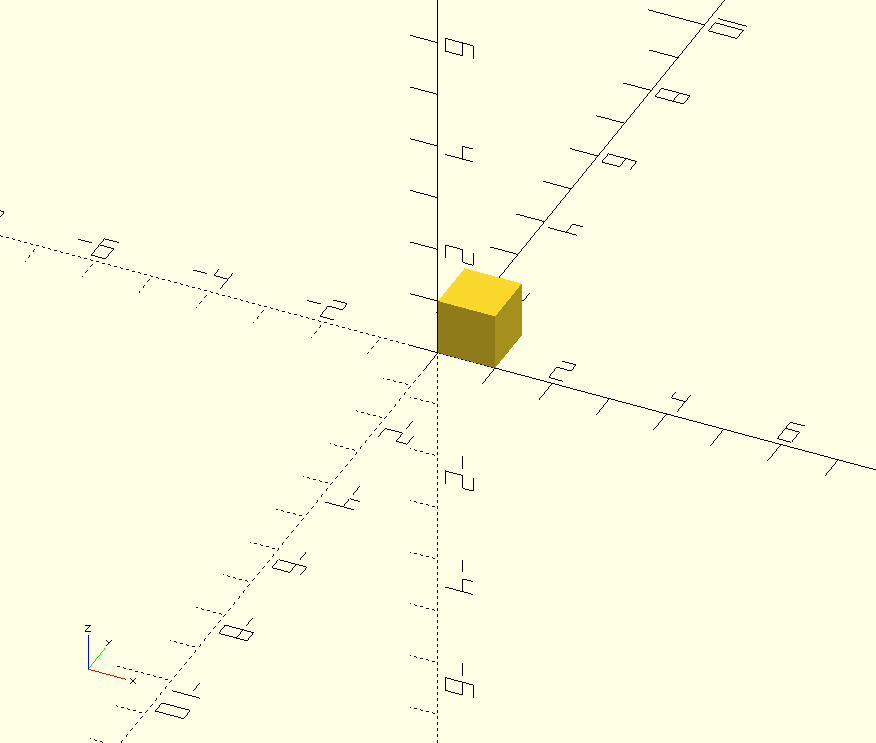
Above the cube add the mirrror command Notice that the transformation does not have a semi-colon.
mirror([1,0,0]) cube();
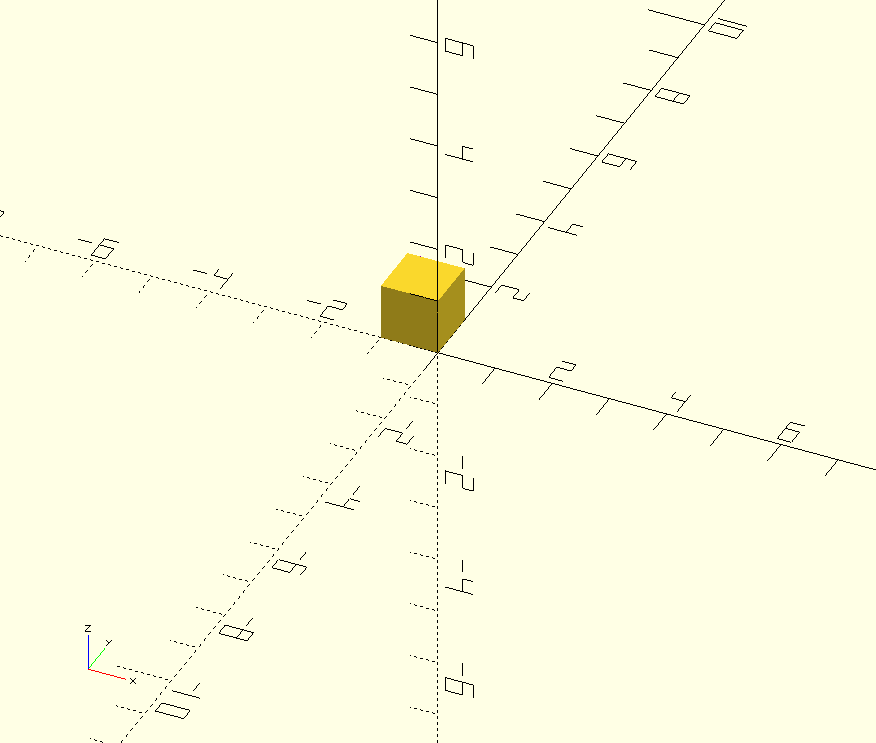
Press F5 and you will see that the cube has flipped around the X axis, you will also notice that the first cube you had is now gone. The mirror modifier is a “Transformation” it transforms the child. It does not add geometry.
The mirror transformation requires a Vector. The vector determines which axis the child object is mirrored.
If you add a second cube you will see that it is not affected byt the mirror() modifier.
mirror([1,0,0]) cube(); cube();
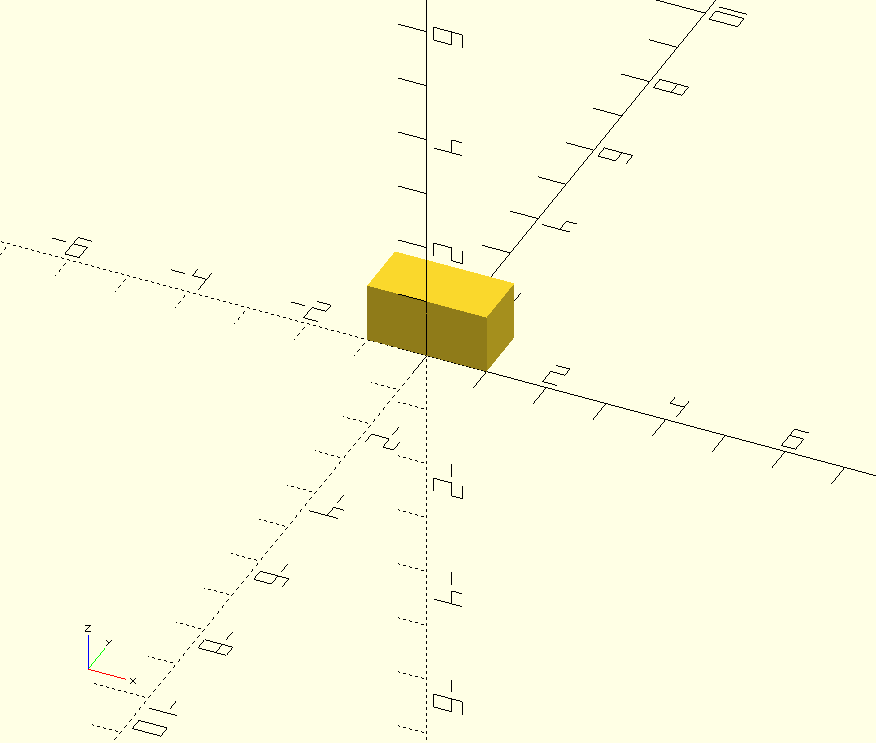
You can mirror on multiple axis at the same time.
mirror([1,1,0]) cube();
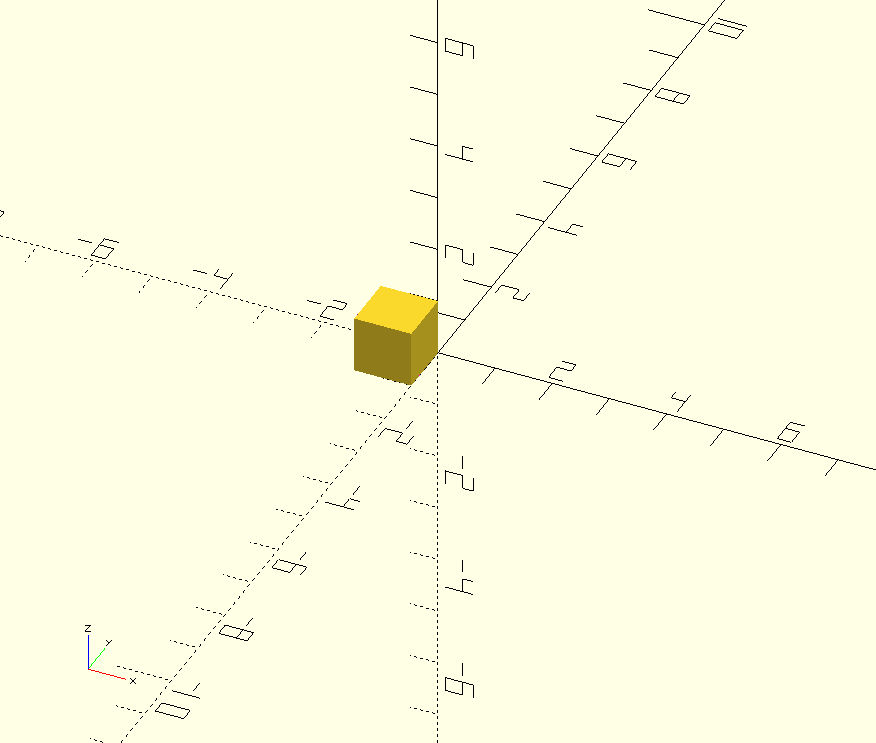
Finally mirror all three. Arguably, not a mirror 🙁
mirror([1,1,1])
cube();
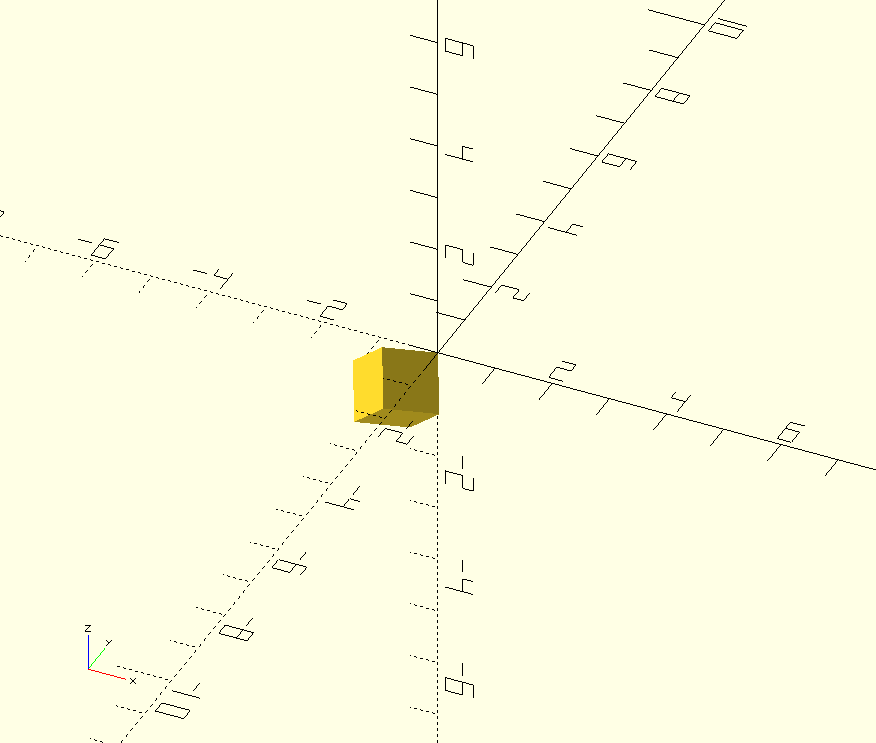
Mirror always works around 0,0,0 If a translate() has been applied the translate will be included in the mirror(). The mirror() transforms all the children.
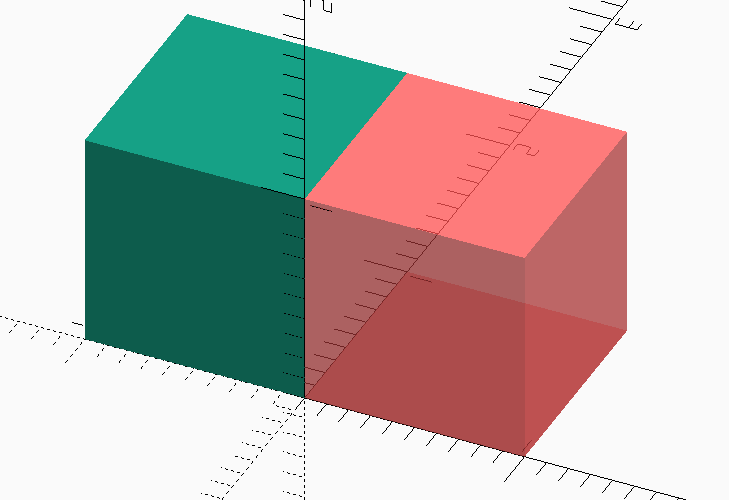
[1,1,1] is a vector normal to the plane that sliices through the origin at an angle. You see the result of placing a flat mirror coincident with that plane.